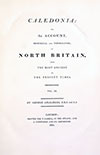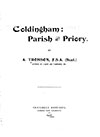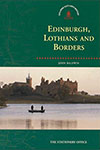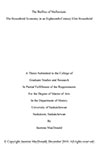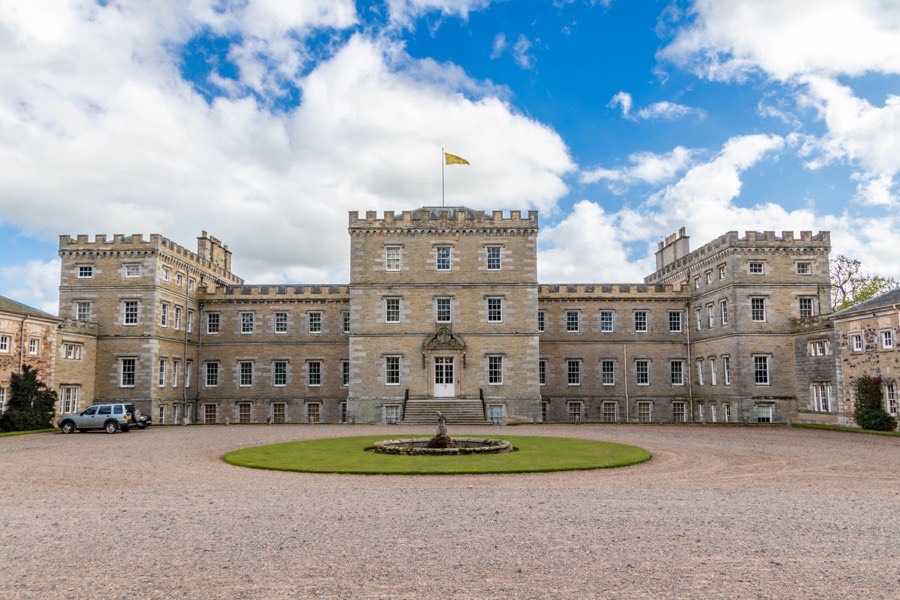

Mellerstain House is largely an 18th century country house, but may have been built on the site of, or close to, an earlier castle.
The lands of Mellerstain seem to have been closely linked to those of Fans and are mentioned in the early 13th century when they seem to have been subdivided into tofts which were owned by the de Hattely or de Haitley family, Richard of Fans and his half-brother David de Graham, amongst others. Grants and donations of land at Mellerstain were made to both Durham Priory and Kelso Abbey, and some time between 1265 and 1285 William de Hattely granted the abbot of Kelso the right to pass through his lands of Meloustan (Mellerstain) and permission to build a bridge over the Blackburn above his house.
By the late 13th century the lands previously owned by Richard of Fans and David of Graham seem to have been in the possession of the Haliburton family, with Phillip de Halyburton confirming the grant of the lands of Melvestan to Kelso Abbey. Philip’s parents were Sir William Haliburton and his wife Christian de Faunes, the daughter of Richard of Fans and brother of Adam of Fans.
The lands of Mellerstain seem to have then made their way into Gordon ownership since in 1408 Robert Stewart, 1st Duke of Albany, while acting as Regent, confirmed to Alexander Seton, son of William Seton de Seton, 1st Lord Seton, and his wife Elizabeth de Gordon “the baronies of Huntly and Gordon, with the lands of Fogo, Fans and Mellerstain in Berwickshire and Strathbogie and Beldygordone in Aberdeenshire” which Elizabeth had previously resigned.
Land at Melvstanys was “warranted to Sir John Halyburton” in 1389 and in 1451 Patrick Haliburton, son of John Haliburton, 2nd Lord Haliburton of Dirleton, was granted the lands of Mellerstain by James II. In 1465 Henry Haitlie had a sasine of Mellerstain and Fans and in February 1478 married Sibil Home, sister of George Home of Wedderburn.
The Haitlies almost lost the Mellerstain estates through financial mismanagement in the second half of the 16th century, with a later Henry Haitlie dying in debt leaving behind his wife, Helen Edmonstone, and his son and heir, John Haitlie. John succeeded in 1591 and borrowed money from William Napier of Wrychtishousis against his land at Mellerstain. With Napier’s permission, and that of his cautioner Andrew Edmonstone of Edmonstone, John feued out to Robert Lumsden of Airdrie in 1602 “the lands and Mains of Mellerstanes, with the mill and the east half of Fawnis”.
John was married to Marion Lumsden and was killed in 1603 as a result of a feud with the Homes. This had begun with a failed marriage contract between Henry Haitlie and a daughter of Home of Cowdenknowes and continued with disputes over land. Relative peace broke out when Henry’s widow married William Home of Bellitaw in 1576 and lasted until January 1603 when four sons of Sir James Home of Cowdenknowes (namely Eccles, Bassendean, Bellitaw and Graden) murdered John Haitlie at the salt tron on the Royal Mile in Edinburgh.
John and Marion’s son, James Haitlie, succeeded to Mellerstain and in 1619 wadset the same lands and mains of Mellerstain, the mill and the east half of Fans to Sir John Edmonstone of Edmonstone and Ednam, “redeemable on payment of 52,720 merks before Whitsunday 1621”. As far as I can tell James’ grandmother, Helen Edmonstone, was Sir John’s aunt.
When the payment wasn’t made Sir John took possession of the lands and in 1627 he was granted a charter of them by Charles I. Following Sir John’s death in 1633 he was succeeded by his heir Andrew Edmonstone of Ednam who in 1643 sold Mellerstain and Fans to George Baillie of Jerviswood. Baillie is said to have lived in a tower house on the site of the present house until his death in 1647, when the property passed to his eldest son, John. John died without issue some time before 1653 and Mellerstain passed to George’s second son, Robert.
Robert was a committed Covenanter and in 1676 he was imprisoned for rescuing his brother-in-law from what he thought was an illegal arrest. His neighbour, Sir Patrick Hume of Polwarth, later 1st Earl of Marchmont, communicated with him during his incarceration by sending his 10 year old daughter, Grisell Hume, as a messenger. Robert was later involved in the Rye House Plot against Charles II in 1683, sentenced to death for treason and executed at the Grassmarket in Edinburgh in 1684. His estates were forfeited and in 1685 were granted by James VII to George Gordon, 1st Duke of Gordon.
Robert’s young son, George, and Sir Patrick fled to Holland and were later joined by the rest of Sir Patrick’s family including Grisell. George became an officer in the Prince of Orange’s Horse Guards, and returned to Britain in 1688 along with the future William II (in Scotland, William III in England). In 1690 George’s estates were restored and in 1691 he married Grisell Hume whom he had got to know during their time in Holland.
In 1725 Baillie commissioned William Adam to design a new house at Mellerstain, and it is at this point that we must address the issue of the location of the old tower house. According to Mellerstain House’s own website the foundations of the new mansion were laid out on the site of the old peel tower, however two guides that I spoke to at the house both gave the late 19th century Norman Cottage or Old Cottage (to the north-west of the house at NT 64554 39249) as the site of the old tower, with stones from it supposedly used to build the cottage which was in part adapted from an earlier structure.

To add another potential location into the mix, a written guide to the house states that in the 17th century the house “was known as Whiteside, or Whytesyde and stood in the vicinity of the present mansion.” Around 800m to the south-west of Mellerstain is Whiteside Tower, however since both Mailerstains and Whyitsyde are shown on Blaeu’s map of 1654 these would definitely seem to be two different and distinct towers.
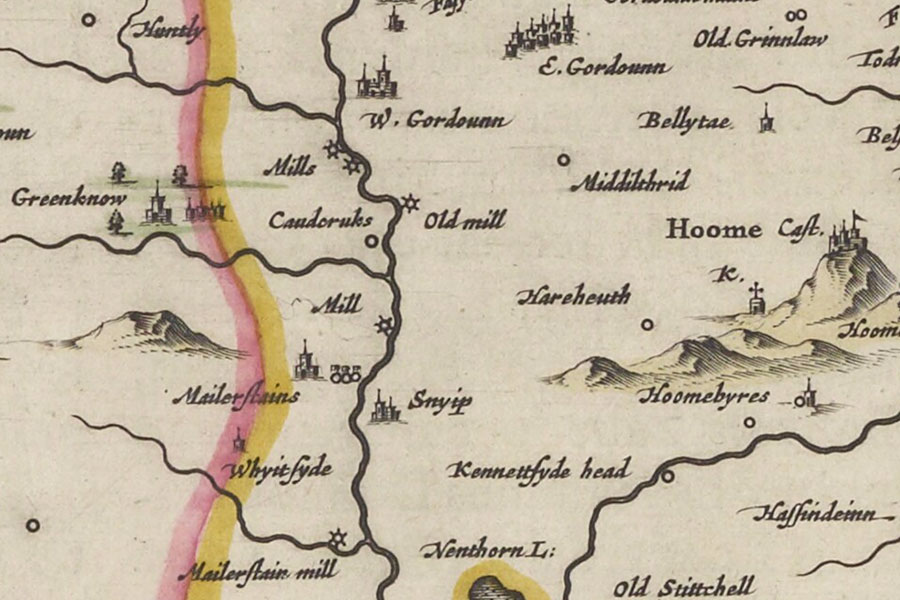
Joan Blaeu, Amsterdam, 1654map image courtesy of NLS
Writing in his diary in 1659 Sir Andrew Hay of Craignethan described Mellerstain as “ane old melancholick hous that had had great buildings about it.” In 1700 George Home of Kimmerghame said of the Baillies’ old house “they have ane old tower wt but one room off a floor about 5 storey high but it looks vert ruinous”. However Lady Grisell’s household accounts record that money was spent repairing the tower in 1701, 1702 and 1703.
Work on the new house stopped following George’s death in 1738, with only the flanking wings completed. The family lived in the East wing while the West wing housed the servants’ quarters and the stables. Whether the old tower house was incorporated into one of these wings, demolished to make way for one of them, remained standing between the new wings or was left on a separate site is unclear.
By the time of George’s death Adam’s design for the gardens had been partially implemented, including the damming of the Eden Water to create a lake known as The Canal below the house to the south-east. In 1759 George Hamilton, George Baillie’s grandson and brother of the 7th Earl of Haddington, inherited the estate and assumed the surname of Baillie. George senior’s daughter, Rachel Baillie, had married Charles Hamilton, Lord Binning, son of Thomas Hamilton, 6th Earl of Haddington, in 1717.
Inspired by his Grand Tour of Europe from 1740 to 1744, George commissioned Adam’s son, Robert Adam, to finish the house and finally join the wings to one another by building the central section, an undertaking which was started in 1770 and completed in 1778. The resulting house is considered to be the only remaining complete Robert Adam building and contains lavish interiors considered masterpieces of his work.
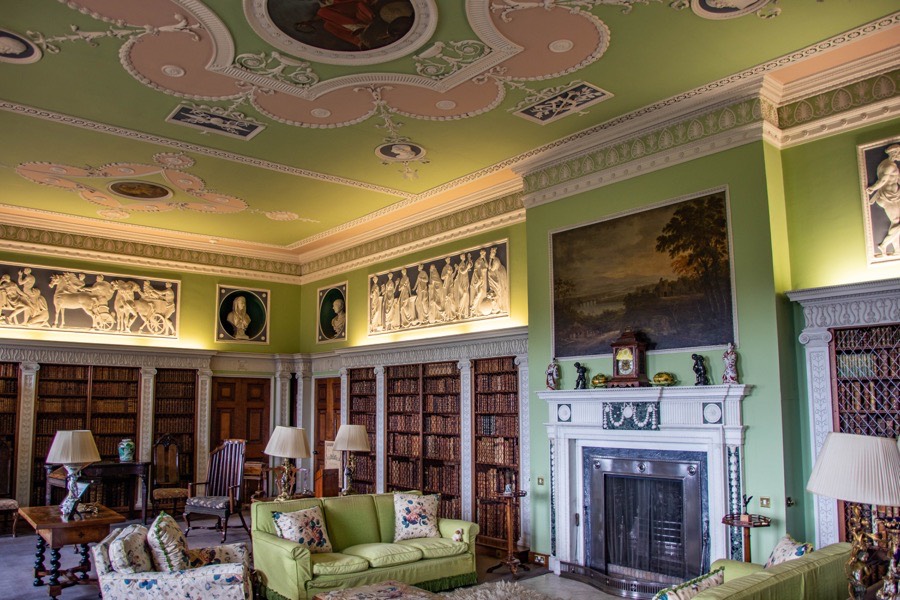
A later George Baillie succeeded his second cousin Thomas Hamilton, 9th Earl of Haddington, who died without issue in 1858, and became the 10th Earl of Haddington, assuming the surname of Baillie-Hamilton the following year. Mellerstain has remained the property of the Earls of Haddington ever since.
In 1910 the Italian-influenced terraced garden to the south-east of the house was laid out by Sir Reginald Blomfield, having been commissioned by George Baillie-Hamilton, Lord Binning.


The family seat was previously Tyninghame House, but following the death of the 12th Earl of Haddington in 1986 that property was sold in 1987 and Mellerstain House became the family seat. The house is open to the public during the Spring, Summer & Autumn.
Alternative names for Mellerstain House
Mailerstains; Mallersten; Melarstanis; Mellastanis; Mellerstain Castle; Mellerstaine; Mellerstaing; Mellerstains; Mellerstane; Mellerstanes; Mellerstanis; Mellerstone; Mellerstones; Mellestane; Melliston; Mellorstanis; Mellostanis; Melloustanis; Melnstanes; Melocstan; Melokestan; Melokistan; Melokstan; Melostane; Melonstanes; Meloustan; Meloustanys; Melvestan; Melvstanys; Millerstaines; Mollestains; Molocstan; Myllestayn; Whiteside; Whitesyde; Whytesyde





